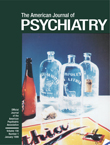Dr. Lichtenberg’s book reviews the research literature related to the mental health of older patients with medical problems. The book is written primarily for psychologists and other mental health care professionals. It is an ambitious, single-authored text, and, as a result, there is little to no overlap in material within the book, which occurs in many edited volumes. It presents ideas, cases, and data in roughly equal amounts.
The book addresses the influence of cognition on health outcomes and the interventions that can be made to optimize outcomes. Psychiatric illness frequently coexists with other illness, and the author contends that one particular mental health variable affects a variety of health outcomes. He argues that cognition represents a direct measure of a patient’s performance level and, in the context of a cognitive assessment, can provide a measure of brain function. Chapter 2 provides a good introduction to the book and this concept.
This book is at its best in chapters that are directly related to the psychologist’s role in the care of the elderly patient. The chapter entitled “Perspectives on Cognition in Normal Elderly and in Those With Alzheimer’s Disease” provides an excellent review of the research on normal aging and cognition and then discusses the utility of the available brief cognitive test batteries. Data on differentiating demented from nondemented elderly are well presented. This chapter segues nicely into two chapters on the Normative Studies Research Project test battery. The first describes the development and validation of this test battery clearly and in detail. The strengths and weaknesses of the test battery are presented in a balanced manner, and guidelines for optimizing the subscales are clear and straightforward. The following chapter presents clinical illustrations of the diagnostic and practical information that can be gleaned through the Normative Studies Research Project test battery. Each case vignette contains a brief clinical history, test scores, a discussion on the diagnosis arrived at through the testing as well as incorporation of the clinical history and presenting symptoms, and practical applications to improve the patient’s everyday function. The cases are quite illustrative of the utility of neuropsychological testing in identifying problem areas for geriatric patients and using that information to improve the patents’ quality of life.
The book is more uneven in quality in chapters on primary psychiatric disorders. The chapter on the detection and treatment of alcohol abuse provides a very good overview of the prevalence of the problem in geriatric patients and the importance of diagnosing it. Brief screening measures commonly used to detect substance abuse are well described, as are typical and atypical presentations of alcohol abuse in the elderly. The treatment of alcoholism is briefly described, and the importance of treatment for this vulnerable population is appropriately emphasized.
The chapters on depression are somewhat more problematic. The chapter describing the role of depression in geriatric health outcomes accurately describes the prevalence and assessment of depression in medically ill older adults. However, the impact of depression on physical health outcomes is not well delineated. Although this volume is aimed at a nonphysician audience, the omission of known relevant data in this area without a notation of this limitation weakens the text. For example, poststroke depression is described, but the work of R.G. Robinson is not cited; nor is there any discussion of the biological association between stroke location and the development of depression. The section on psychosocial treatment of depression, as well as the chapter on the behavioral treatment of depression, does not mention medication treatments at all, nor does it compare behavioral treatment with medication treatment outcomes. The discussion of efficacy focuses solely on who provides the service to the patient rather than on outcome measures, such as reduction in depression rated by the Beck Depression Inventory, for example. This is particularly striking given the amount of data presented in this volume. The chapter on neuropsychological testing appears between the two chapters on depression; overall, the organization of the volume is distracting.
The volume closes with two chapters looking toward the future. The chapter on emerging areas that practitioners need to become more adept in assessing and managing is a good overview of where geriatric needs will be in the next decade. Dr. Lichtenberg finishes the volume with practical guidelines for the survival of mental health practitioners in an era of cost containment and increasing needs of the elderly.
This book balances the author’s clinical and research expertise in geriatric health care settings. It is well written overall, and I recommend it to psychologists and other mental health care professionals interested in the diagnosis and psychosocial management of psychiatric disorders in the elderly.

